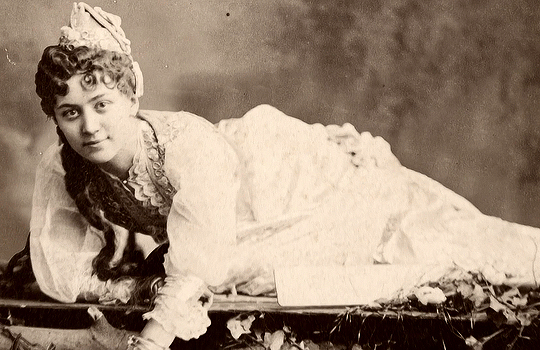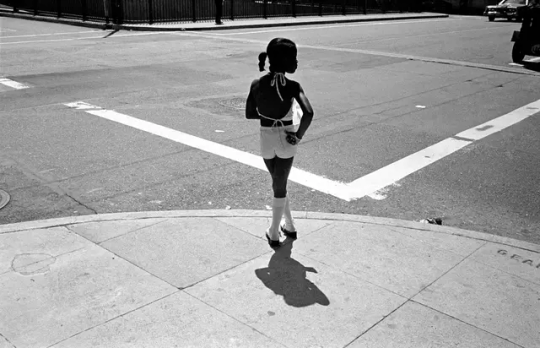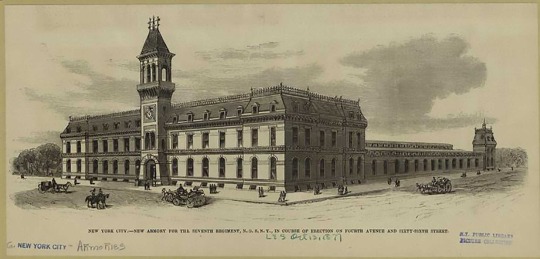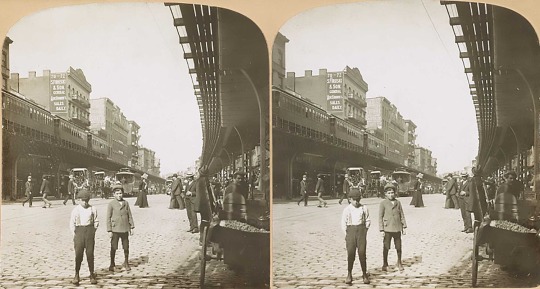#American Experience
Explore tagged Tumblr posts
Text
I have yet to see an argument against rednote that is valid and not just the manifestation of the red scare and American exceptionalism. “But.. but the CCP is stealing your data and selling it to their government!1!” WOAH REALLY? wow, I sure am glad that I use Facebook and Instagram instead, American apps that were some of the first ever worldwide to specifically steal and sell Americans information to the us government! I Really dodged a bullet there! “But, but the CCP is commiting a genocide?!!” Yeah, and that’s horrible, reprehensible, but so is what the United States has done, multiple genocides in the past few years alone actually, Syria, Yemen, Palestine, all genocides funded and influenced if not outright carried out by the United States government. “Yeah well, well did you know that the Chinese are only nice to foreigners? They HATE eachother!!!” ???? Have you??? Seen ??? How?? We?? Have?? Treated?? Eachother?? The?? Past?? 8?? Years??? Like really? THATS your bombshell mic drop argument?? And finally, of course, “but-but China wants to sell you PROPAGANDA!!” Like what? That the United States is an oppressive imperial entity that controls the world through fear?? Yeah, no fucking shit bitch, I’ve BEEN knew, I LIVE here. All of these arguments, all of these claims of American superiority, are the result of DECADES of carefully crafted propaganda and paranoia campaigns designed specifically to convince you that communism is some great unimaginable evil in order to shift your eyes away from the actions of our OWN government. We are no better, and no worse, than the CCP, and anyone who believes otherwise, is one of the hundreds of millions who has been successfully duped by the most powerful empire in the world.
#rednote#american exceptionalism#american experience#american imperialism#imperialism#United States government#red scare#military propaganda#military industrial complex#us propaganda#american history#ccp#the CCP#china#tiktok#TikTok ban#us politics#American politics#socialism#communism#mccarthyism#american propaganda
177 notes
·
View notes
Text

Hey babe, let’s get coffee at the combo Dunkin- urgent-care!
#Americana#vibes vibes vibes#American experience#capitalism#I guess that tag is relevant#You can go get tested for Covid#Then walk next door and get a coffee and a donut
587 notes
·
View notes
Text
I generally try to keep this account to Fandom stuff, but I don't really have anywhere else to rant about this. So, it's going on here.
In regards to the TikTok Little Red Book protest going on; I do want to point out that the reactions from the Americans about seemingly mundane stuff that should be obvious is actually pretty normal for Americans that are experiencing life outside of the U.S. for the first time. We're so used to the fucked up parts of our country that it's easy to forget how bad it is. That the idea of something like Universal Healthcare, for example, isn't some revolutionary thing but the norm in most places. It's like living with chronic pain or an abusive family. You know it's not right, but it's your normal. That's what you know, and you're so busy managing it that fixing it seems so far out of reach that it's barely worth thinking about. So you grit your teeth and act like you're fine because it's normal. Because if it's not normal, well...
I do love seeing the connections and interactions this is causing, though. It's what the internet was made for. What all these social media platforms were made for. I've moved a lot, lived in a lot of places, and I've found that people are the same wherever you go. Mild tweaks here and there, but humans are humans. And I love seeing people realize that.
I do hope something good comes from this protest. And make no mistake, that's what this is. A protest built on spite. In fact, it kind of reminds me of the Boston Tea Party (albite with less property damage). It wasn't about the tea in the same way this isn't about TikTok. They're both a result of the people feeling ignored by their government and actively giving Big Brother the middle finger.
But i am glad that, the very least, people are making connections that, under any other circumstance, may never have happened. It's a lovely thing to see, and i hope something good comes from all of it.
#tiktok#little red book#not what i usually post#protest#tiktok ban#american experience#xiaohongshu#Why do i think it would be hilarious to call the protest the Chinese Tea Party?#human connection
21 notes
·
View notes
Note
Did you watch the pbs documentary on the vice presidents yet and what did you think? And what vp that never became president do you think would have been best qualified to be president?
Yes, I was very much looking forward to PBS American Experience's "The American Vice President," and watched it as soon as it was released. I'm basically the target audience for documentaries like that, so I always appreciate and enjoy them. I will say that I thought that there were a lot of missed opportunities in it, however. I was really hoping that there would be some short biographical pieces on the various Vice Presidents, particularly many of the earlier VPs that nobody knows anything about. There are some really fascinating stories that could have been told about them, so I was a little bummed we didn't get that.
For the most part, the episode focused on the idea of the Vice Presidency as opposed to individual Vice Presidents. And it spent a lot of time on succession and the 25th Amendment. Now, that is no surprise -- that's basically the reason the Vice President exists in the first place. But at times it felt more like a documentary on continuity of government than the Vice Presidency, and I just wish there would have been more time spent on the personalities who have served in the position over the past 235 years.
As for the second part of your question, I'm going to do what the documentary largely did and answer based on the Vice Presidents since World War II. Once the nuclear age was upon us, the Vice Presidency became a more important role for those continuity of government reasons, and the quality and experience of most Vice Presidential candidates has improved during that time because it was more necessary to choose a running mate who was capable of actually taking over as President than balancing the ticket regionally or ideologically.
Since World War II, I think the Vice President who was best equipped to become President but never did was obviously Al Gore. I have always been shocked that Gore never made another run for the White House after 2000, but I also imagine that it must be an absolutely soul-crushing experience to run for President, seemingly win (and definitely win the popular vote), only to have the Presidency awarded to your opponent by a party-line decision of the United States Supreme Court.
Another post-World War II VP who never became President in his own right but probably would have been good in the job was Nelson Rockefeller. Because of the circumstances and brevity of his time as Vice President, Rockefeller is often forgotten about, but he was considered a real contender for the Presidency on numerous occasions before he was appointed to fill the Vice Presidential vacancy created when Gerald Ford succeeded Richard Nixon in the White House after Nixon resigned. Rockefeller won four elections as Governor of New York, all by comfortable margins, and he never achieved his Presidential goal because the timing was just never right for him. His best bet as a Presidential candidate should have been 1964 or 1968, but after JFK's assassination, few Republicans wanted to run against LBJ less than a year later (and with good reason, LBJ's popular vote landslide was huge). And by the time the 1968 election rolled around it became clear that Richard Nixon had spent his years in political exile following his humiliating loss in the 1962 California Gubernatorial race building a powerful campaign machine that helped sweep him into office. But when it comes to experience, few VPs were better qualified than Vice President Rockefeller.
If you haven't seen "The American Vice President" from PBS's American Experience, I would definitely recommend checking it out. You can watch it (and many of American Experience's other excellent documentaries) on the PBS website. It's also currently available to watch for free via the PBS feed on YouTube.
youtube
#The American Vice President#PBS#American Experience#PBS American Experience#History#Documentaries#Vice President of the United States#Vice Presidency#Vice Presidential History#Politics#Presidential Politics#Presidency#Presidential Succession#25th Amendment#Vice Presidents#VP#Veep#Veeps#VPOTUS
26 notes
·
View notes
Text

the nine University of Washington students who took the rowing world and the nation by storm when they captured the gold medal at the 1936 Olympic Games in Berlin. The Boys of ’36 will show how the team overcame psychological, physical, emotional and economic hardships to beat not only East Coast Ivy League teams but Adolf Hitler’s elite German rowers. Their surprise triumph gave hope to a nation struggling to recover from the Great Depression.
#the boys of ‘36#american experience#pbs#rowing#the olympic games#the boys in the boat#history#us olympic team#my edits#don hume#joe rantz#george hunt#jim mcmillin#john white#gordy adam#charles day#roger morris#bobby moch#university of washington
31 notes
·
View notes
Text

#happybirthday #evebest #actress #RhaenysTargaryen #HouseoftheDragon #NurseJackie #AmericanExperience #TheHonourableWoman #TheKingsSpeech #PrimeSuspect #TheFinalAct #SomeoneYouLove #LieWithMe #LuckyMan #FateTheWinxSaga #Maryland #TheCrown #Macbeth #HeddaGabler #MuchAdoAboutNothing
#happybirthday#eve best#actress#rhaenys targaryen#house of the dragon#nurse jackie#american experience#thehonourablewoman#thekingsspeech#prime suspect#thefinalact#someoneyoulove#lie with me#lucky man#fate the winx saga#maryland#the crown#macbeth#hedda gabler#much ado about nothing
25 notes
·
View notes
Text
Imagine climbing up 83 steps. Perhaps that doesn’t seem like such a big deal—but that’s likely because you’d be walking. What would you do, though, if you couldn’t? That was the premise behind the Capitol Crawl, a now-iconic protest to demand the passage of the Americans with Disabilities Act. The ADA was a landmark civil rights bill aimed at providing basic amenities and protections to some 40 million mentally and physically disabled citizens. Today we take many of the ADA’s changes to society—curb cuts in sidewalks and closed captioning on entertainment, to name just two examples—for granted. But the act’s passage, in 1990, was anything but guaranteed. By spring of that year, the ADA had been trapped in legislative limbo for months. Despite the strong support of then-President George H.W. Bush, the act was languishing in Congress, caught in the deliberations of House subcommittees. Many U.S. Representatives balked at the expense and complication posed by the ADA’s requirements. Enter ADAPT—American Disabled for Accessible Public Transit—a grassroots disability rights organization that had been staging protests across the country even before its official founding in 1983. On March 12, 1990, ADAPT led a procession of more than 500 marchers, including other disability activists and lobbyists, from the White House to the west side of the U.S. Capitol. There, in the kind of guerrilla civic action for which the organization had become known, scores of marchers dropped to the ground and began the long journey up the hard marble stairs leading to the “People’s House.” They climbed backwards or on their hands and knees, step-by-painstaking-step. “As I’m seeing the people around me,” recalled Anita Cameron, one of the ADAPT activists who made her way up that day, “I'm like, ‘whoa, we are doing it. We are really doing it. We’re, like, crawling into history.’” Rolled up in their pockets, protestors carried copies of the Declaration of Independence. Once they finally summitted the stairs, ADAPT reps delivered those scrolls to members of Congress as a reminder of the ADA’s importance. And while media coverage of the event wasn’t extensive, but the publicity that was garnered by the Crawl was impactful. “The pictures were striking,” said The New York Times several days later, “just as they were intended to be: Children paralyzed from the waist down crawling up the steps of the Capitol.” Six months later, following the bill’s now-remarkably swift passage through the House, President George H. W. Bush signed the ADA into law. “We did it to show that we disabled people, as second class citizens, needed change. And the vehicle for how it was going to change was the ADA,” Cameron told American Experience, reflecting on the Capitol Crawl’s significance. “But I think a lot of people forget that the ADA was the floor. It was not the ceiling. So it was the beginning of rights for us, but it was not the end.”




#disability#disability rights#disability history#capitol crawl#pbs#american experience#history stuff
7 notes
·
View notes
Text








American Experience opening theme (1980's and 90's)
#american experience#tvedit#daily80s#grandmastv#userdocumentary#fyeahtv#filmtvtoday#filmtvcentral#cinemapix#cinematv#usercreate#dailymedia#dailyflicks#usersource#filmtvsource#dailytv#entsource#my work
7 notes
·
View notes
Photo


American Experience: The Gilded Age (2018)
81 notes
·
View notes
Text
in a costco
heard a scream
everything’s just as it seems
19 notes
·
View notes
Text

Girl on a street corner in Chicago by British photographer Michael Ormerod, 1978.
#Michael Ormerod#vintage photos#photography#b&w photography#b&w aesthetic#b&w#vanishing point#i love it#american landscape#urban photography#urban landscape#storytelling#evocative#american experience#perspective#35mm photography#35mm#haunting#photoblog#photobook#photo of the day#chicago#1978#street corner
3 notes
·
View notes
Text
Mapping Gilded Age New York
The Gilded Age was a study in contrasts. Immigrants arrived in New York City with little to nothing in their pockets, while just uptown some of the richest men and women in America built mansions that resembled European palaces. As more and more people carved out their homes on the island at the end of the 19th century, different ideas about what New York was and who belonged there emerged. American Experience spoke to Jack Tchen, Associate Professor at NYU’s Gallatin School of Individualized Study, about the way race and class tensions played out against the vibrant, dynamic landscape of New York City in the Gilded Age
— By Jack Tchen | American Experience | Published: February 2018 | November 04, 2023

J. W. Williams, Root & Tinker/Library of Congress
1. The Spine
Leading up to and during the Gilded Age, New York City begins to define itself along its spine, the middle of the city, rather than by its shoreline. The wealthy are gravitating away from the shoreline, which is seen as rougher and more dangerous. If you have money, you’re afraid that the workers in your counting house or your factory are going be jealous. You want to find other people who have money. And Fifth Avenue becomes the place where you find them. From Bowling Green to Washington Square Park, from Washington Square Park to Madison Park, and from Madison Park up to Central Park and 57th Street — this becomes what wealthy white Anglo-American Protestants feel is their New York. They feel that the greatest wealth of the city and of the nation is being generated and being expressed along this spine. The global branding of Fifth Avenue really emerges at a moment in which the Fifth Avenue merchants come together and say, “We have to protect Fifth Avenue. Fifth Avenue is ours and to maintain our identity, we have to keep out all the new immigrants who are trying to make money, who are setting up garment factories.” They begin to re-territorialize what had been a neighborhood of small producers, and to claim a kind of ascendancy and superiority.

Charles Pollock/Library of Congress
2. Metropolitan Opera House - Broadway and 39th Street
The building of the Metropolitan Opera House in 1883 is a great example of how cultural capital actually works. Did the people who went to the Met love opera? Probably not. In some ways, this was an emulation of European culture, especially Italian culture — but in Italy, opera was actually a mass activity that people from all stations of life loved. In the new world, it was transformed into this rarified art that supposedly only elites could understand. It was stilted in terms of performance, especially in comparison to the more popular forms of theater. And it was in a foreign language.
But the building was important. The box seats were important. Who was sponsoring the performances was important. So in a sense, supporting the opera became the perfect vehicle for elites to outdo each other.

Ernest Marx/Library of Congress
3. Vanderbilt House — 1 West 57th Street in New York City
Alva Vanderbilt was the driving force behind the “Petite Chateau” Vanderbilt mansion, which was completed in 1883. It was built of limestone, in contrast to neighboring brownstones, in the style of a French Renaissance palace. Her housewarming party was one for the ages. Twelve-hundred guests attended. Their costumes were sheer excess and outré; one woman, Miss Kate Strong (nicknamed “Puss”), wore a taxidermied cat head and seven cat’s tails decorating her skirt. By today’s dollars, the party was said to cost $6 million—one quarter of which went to the finest champagne.
What’s really important here is to acknowledge the role of women in the wealth-building process itself. Because it’s not just wealth building in terms of actual dollars — it’s also wealth building in terms of status. And women are the ones who know how to build that kind of social and cultural capital that gives their families the standing and prestige that other families of wealth will begin to recognize and accept.
In some ways, the women who are leading these families and creating these parties are like the ad men on Madison Avenue. They’re branding the family. They’re making the public — other elites especially — appreciative of why they belong and why they should be recognized widely. So when Alva Vanderbilt builds her mansion, she’s being very creative, very thoughtful, and very tenacious in trying to establish that profile of the Vanderbilt family.

Petite Chateau, Library of Congress
4. Seventh Regiment Armory - 640 Park Ave., Bet. East 66th & East 67th
The street grid of New York City means that people of great wealth are cheek-to-jowl next to people living in extreme poverty. That sense of injustice and the divide between the wealthy and the poor is palpable.
The Gilded Age was a fractious time, and amidst growing wealth and opulence, a sense of desperation and resentment emerged. I think the wealthy felt some anxiety at the thought that at some point that tension would erupt.
So they built armories to defend against riots and protests. The armories housed volunteer regiments — the precursor of the National Guard. The Seventh Regiment, also known as the “Silk Stocking” or “Blue-Bloods” regiment, was a who’s who of the Gilded Age elite. It was first headquartered on the Lower East Side — but it moved uptown as the wealth of the city did. The armory now on Park Avenue opened its doors in 1880.

The New York Public Library
5. Harbor
New York Harbor was deep enough that it didn’t freeze over, so it could actually operate year-round. Lots of raw products — grains, sugars from the Caribbean — can all be exchanged in this deep-water port and then processed and sent by way of the Erie Canal into the heartland, and also traded across the Atlantic. So New York becomes kind of a central economic exchange hub, feeding and processing so much of what is being consumed by the growing middle classes of North America, and Europe.

Currier & Ives/Library of Congress
6. Orchard Street
As the wealthy Protestant elite move uptown, away from the waterfront, the lower east side becomes a neighborhood of immigrants. Jewish and Italian immigration really starts in great numbers in the latter part of the 19th century. Millions of people are coming to New York. They’re dazzled by visions of streets of gold.
The older tenements on the lower east side become jam-packed. The whole notion of a middle class apartment with one person in a room — that didn’t exist. A single apartment could house multiple extended family members; a family might even rent out a room to make ends meet. The idea of how you used space was different. The streets were really an extension of where you lived.
Take the market on Orchard Street. It was really an American reproduction of the small market towns that many Jews had left in eastern Europe. If you look at old photos, you can just imagine the sounds and smells. Jews, Italians, and Chinese are living side by side. And out of that, a port culture begins to emerge. People are bringing the cultures that they left. Lots of languages are being spoken, and lots of new dishes and new fashions are being created. It’s all part of this new, intermingled culture. And that intermingling, I think, is what’s distinctive to New York City — as opposed to the culture of the uptown elites, who are really emulating their fantasy of the european aristocracy.
The uptown elites, by the way, are really scared of this new, intermingled port culture. They have a certain notion of Protestant destiny in terms of who this country properly belongs to. They’re concerned with who’s creating value — monetary, but also the cultural value of the nation. Meanwhile, these non-Protestants of suspect racial origin keep coming into the city. So there’s a growing guardedness of who should count, who belongs there.

Bain News Service/Library of Congress
7. Bowery
While the elites are walking up and down Broadway, checking each other out in a way that prefigures the shopping mall or the arcade, immigrants and members of the white working class hang out on the Bowery. It’s where people go for dime museums, tattoo parlors, bars; all that kind of popular culture that we tend to think of now as connected to Coney Island originates on the Bowery.
These new immigrant and working class audiences are constantly looking for new and exciting forms of expression. They’re willing to pay maybe five cents to see what’s happening on the stage, what’s happening in music, and in bars. Essentially, what happens is street culture gets brought into the commercial culture, the indoor culture in which people are willing to pay for entertainment.

Library of Congress
#The Gilded Age | Article#American Experience#NOVA | PBS#New York | Gilded Age#Jack Tchen | Associate Professor | NYU’s Gallatin School of Individualized Study
5 notes
·
View notes
Text
youtube
I want to see this now!
#PBS American Experience#American Experience#PBS#Vice Presidents#Vice Presidency#The American Vice President#Veep#VP#Presidency#History#Vice President of the United States#Vice Presidential History#Politics#Constitution#Youtube
8 notes
·
View notes
Text
I just found out from my friends in East Asia that apparently we've all been wrong about The Singularly Most Western Experience. Apparently its getting phishing/scam phone calls.
Like any good English Speaking American knows that 14 times a day, any given day of the week, regardless if it is a day or time that company would actually be at work, we will get a phone call from someone with a HEAVY eastern accent (wether that be Punjab or Chinese or Philliphine or otherwise) telling us their name is some generic white person name which is very obviously Not Their Name, and that they are calling from some Government funded program or a hospital or our bank or amazon or our cable company or about our cars extended warranty. And you dunk on them and laugh in their faces because we live in a fucking hellscape where NO COMPANY LITERALLY EVER, *least* espically The Government, would offer us that, let alone actually let us know about it, and then you hang up.
So when we make "hi im calling about your cars extended warranty!" jokes, turns out, they dont know thats why. So anyone out East reading this, Hi! If you ever see a really shady call center job, that's what youre doing! youre signing up to participate in Mutually frustrating American Crank Calling that ultimately yeilds little to no money.
0 notes
Text
youtube
My review of "The Brutalist," the years biggest awards movie that entails the 40 year experience of an immigrant Holocaust Survivor in America. Is it a brutal watch or is it one of the years greatest cinematic achievements?
Follow me on my various social media sites @AwesomearnoldK
Or My Tumblr @theconnoisseurreviews
#the brutalist#movie review#film review#the connoisseur#youtube#tiktok#2024 film#academy awards#adrien brody#felicity jones#guy pearce#immigrant experience#american experience#immgrants#bafta#brady corbet
0 notes














